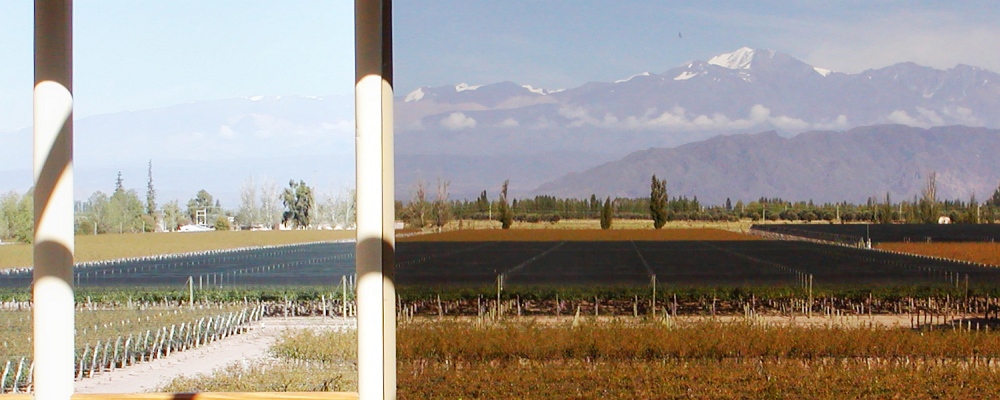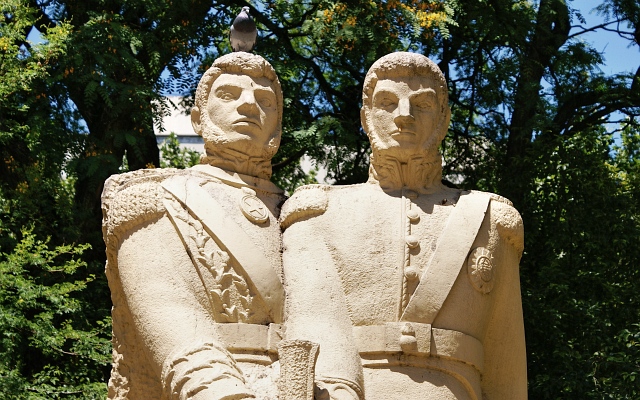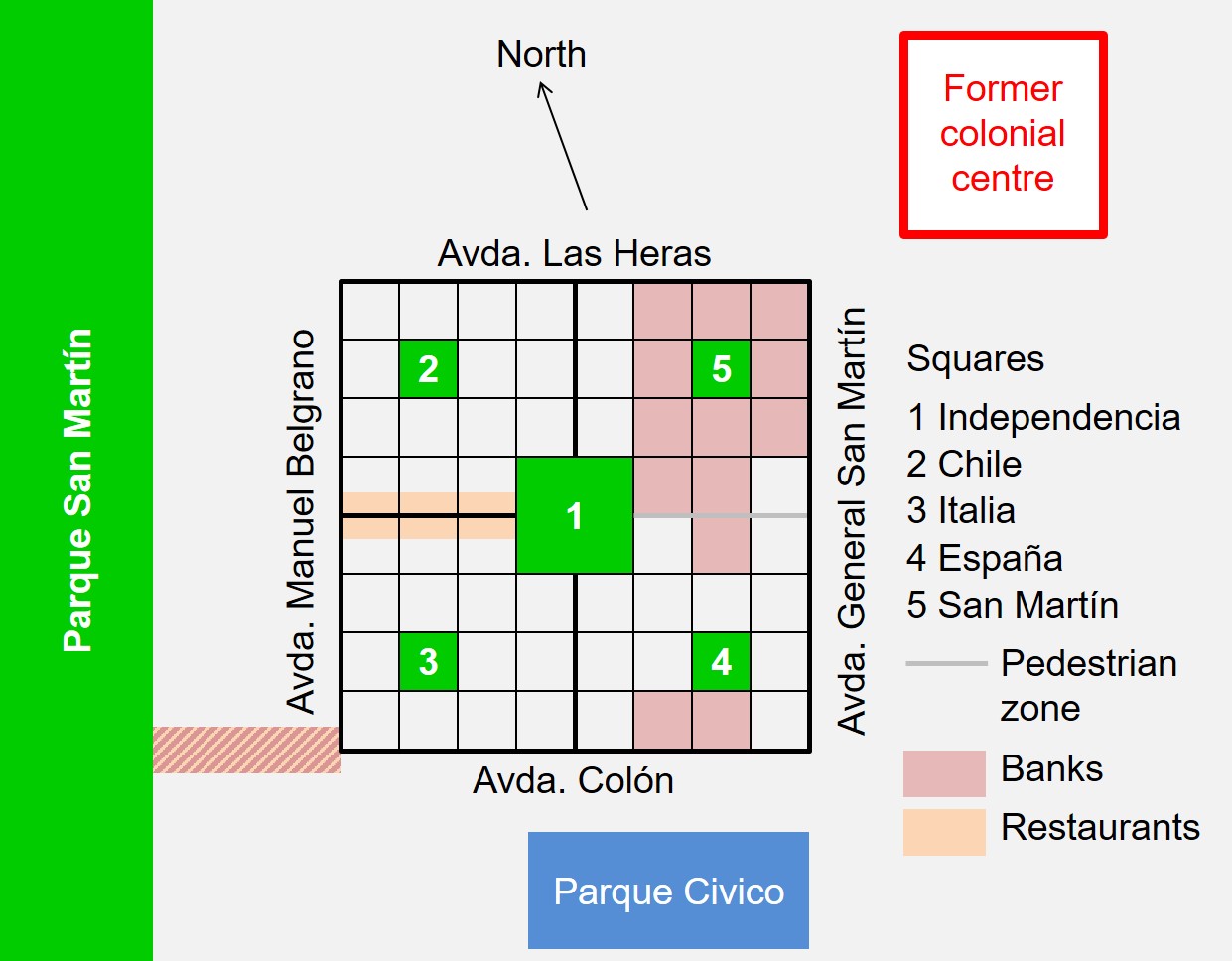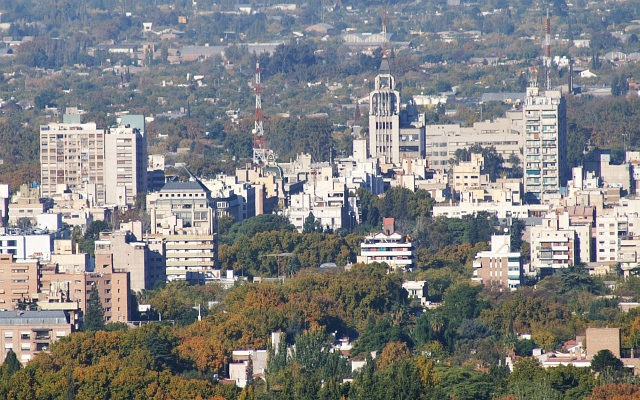Mendoza
by Teresa Doppler, Tina Gneist, Simone Helmer, Thomas Lindinger, Peter Mathis, Simon Schmidthaler, and Magdalena Steiner

by Teresa Doppler, Tina Gneist, Simone Helmer, Thomas Lindinger, Peter Mathis, Simon Schmidthaler, and Magdalena Steiner

The region of Mendoza, with its capital city of the same name, is famous for the cultivation of grapes. Walking through the vineyards, Pachacutec recovers from the exhausting crossing of the Andean mountains, where he has visited Portillo, and tells us that the farms of the Inca were most commonly placed between the bottom of the valleys and the pastures at high elevation. In this way it was possible to breed animals and to cultivate various types of crops. Particularly in the mountains, one of the most important product were potatoes, whereas corn was grown in lower areas.
Which similarities are there between the traditional agriculture of the Inca and the modern viticulture in Mendoza? Find it out! You can also click on the Inca warrior in order to access general information about the road network of the Inca.

There are more or less no similarities. The farmland of the Inca was located mainly in the mountainous terrain of the Andes, and was structured in a very small-scaled manner. The various goods were traded between the different elevation zones. The modern viticulture in Mendoza, in contrast, is run as a monoculture on the large, flat terrain of the eastern Andean forelands. It is operated by large enterprises driven by capitalism. The wine is sold within Argentina, but also exported to many other countries.
Click into the title image to leave the vineyard and enter one of those wide alleys which are so typical for the city of Mendoza.

Mendoza and the battle for independence
Mendoza played an important role in the battle for independence from the Spanish. In 1817, the independence warrior Bernardo O'Higgins crossed the Andes together with General José de San Martín and defeated the Spanish in the Battle of Chacabuco in Chile. His arm was wounded in the lost Battle of Cancha Rayada in 1818. The Battle of Maipú on 5 April 1818 brought the final victory for the Chilean warriors for independence. The victorious José de San Martín installed a national government. But he refused to serve as the Chilean president, in favour of Bernardo O'Higgins.
The monument of ever-lasting friendship between Argentina and Chile was erected on the Plaza Chile in Mendoza.
Click on the arrows or into the image to move on to the monument Ejército de los Andes on the Cerro de la Gloria, which is also related to the battle for independence.




A green oasis - but where is the historic centre?
Mendoza is a vivid, green oasis in the desert. The cityscape is characterized by wide avenues lined by sycamore trees and modern buildings, as it an be seen on the title image. In the city centre it is remarkable that there are, except for the four cuadras large central Plaza de Independencia, four more squares, arranged in a symmetric pattern. They are Plaza España, Plaza de Chile, Plaza Italia, and Plaza San Martín. Each and every spot in the centre is close to the next square. Some parts of the centre also have their specific functions - most banks, for example, concentrate around the Plaza San Martín, whereas many restaurants line up along two roads.
What is missing in Mendoza is the historic centre with narrow roads and buildings dating back to the colonial era, as it can be seen in most other cities of South America, such as Salta. In Mendoza, the colonial centre was once located approx. 1 km northeast of the modern centre. It does not exist any more.

Why has the colonial centre of Mendoza disappeared, and why are there so many squares and wide avenues?
On 20 March 1861, Mendoza was completely destroyed by an earthquake. Only the ruins of the church of St. Franciscus give evidence of the time before this disaster. More than 4000 of the 11,500 inhabitants - approximately one third of the population - lost their lives. The city was rebuilt two years later in a more earthquake-resistant way. The many open spaces should serve as safe havens in the case of future earthqakes. Furthermore, their design followed the ideas of that time to make the cities greener. At the end of the 19th Century, Mendoza had a school of agriculture, a lot of trade, and 18,200 inhabitants in 1882. In the early 21st Century, Gran Mendoza has a population of approximately one million.

Furthermore, a drainage system for the case of heavy rainfall events was constructed, in order to avoid frequent flooding. This system only helps to some extent, as shown by the following movie.

A summer rainstorm in Mendoza
Click on the arrow to start the movie.
Mendoza is far away from the Atlantic Ocean, and well protected from humid masses of air - leading to winter rainfall only 200 km west in Chile - through the Andes. Therefore it is arid here, so that the viticulture depends on irrigation. However, during summer the formation of convective clouds may lead to rainstorms in the afternoons or evenings, producing runoff that is too much for the system of open channels - which is polluted and should actually serve for irrigation of the trees. In the next morning, usually everything is as it was before.
Movie: Peter Mathis

Birle, P. (2009): Zwischenstaatliche Konflikte in Südamerika vom 19. Jahrhundert bis heute. Ursachen, Lösungsansätze, Perspektiven. In: Mark, L. & Fritz, E.G. (Hrsg.): Lateinamerika im Aufbruch. Eine kritische Analyse: 123-136. Athena-Verlag, Oberhausen [Access source]
Métraux, A. (2001): Reich der Inka. Stuttgart
Wittelsbürger, H. & Möller, S. (2005): Die Beziehungen Chiles zu seinen Nachbarländern - ein Verhältnis zwischen Bewunderung und Miβgunst. Konrad Adenauer Stiftung, Santiago de Chile [Access source]
Wood, T. (1996): Die Inkas. Erlangen
Spanish-language Wikipedia article on Mendoza [Access source]
Spanish-language Wikipedia article on the earthquake of 1861 [Access source]
This contribution was revised, extended, and translated from German by Martin Mergili.